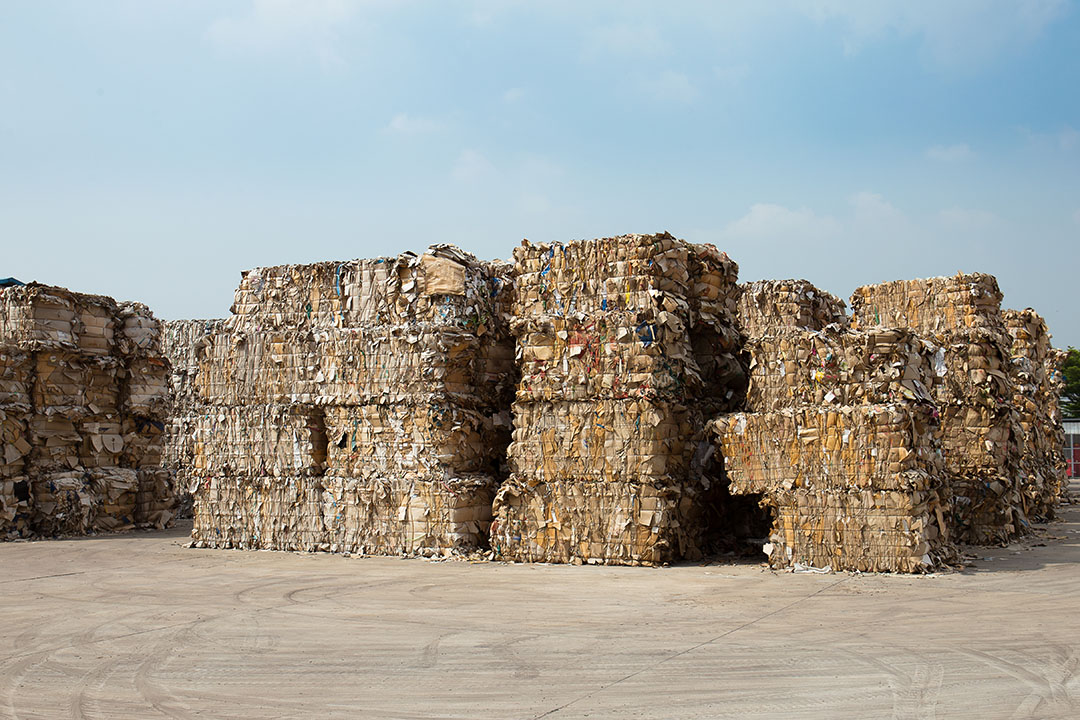
Paper mill operators are raising prices for finished goods in part to cover rising feedstock costs. | 1933bkk/Shutterstock
Major recycled paper mill operators have seen a significant financial impact from rising recovered fiber prices this year. But in recent earnings calls, publicly traded firms say the roller coaster market is entering a flat stretch.
The U.S. national average OCC price came in at $106 per ton this month, double where it was last summer, according to RecyclingMarkets.net. But the August price was a slight dip from July, when the grade was at its highest price in two years. Recent insights from major mill operators indicate the steady price increase that has played out over the last year may be reaching a plateau.
Hugues Simon, CEO of Kingsley Falls, Quebec-headquartered Cascades, noted that the fiber packaging company saw average OCC prices increase 9% from the first quarter and 134% year over year. Compared to the same period last year, Cascades reported its second-quarter earnings took a hit of 29 million Canadian dollars ($21 million) solely from raw materials, primarily OCC.
“The market for this material saw consistent demand domestically, including growing amounts needed for new recycled containerboard mills,” Simon said during an Aug. 8 earnings call.
However, he specified Cascades had “no problems supplying our operations with good inventory management in our internal supply network.” He added the company expects a “relatively stable market in the coming months.”
Packaging Corporation of America CEO Mark Kowlzan similarly said during a July 24 earnings call that the company anticipates only “slightly higher recycled fiber costs” during the third quarter.
If prices stay flat or only increase slightly, it may be due to generation catching up with demand. Cascades reported OCC generation has increased in line with typical seasonal trends. Indeed, several companies reported significantly higher containerboard production year over year, suggesting OCC generation will continue to rise.
PCA reported producing nearly 1.3 million tons of containerboard during the quarter, which Kowlzan said marked a new containerboard production record. Corrugated packaging shipments were up 9.2% year over year.
International Paper reported its second-quarter containerboard sales volume was up 32% year over year, hitting 791,000 short tons, and up 7% from the first quarter of the year. Conversely, corrugated packaging sales volume was down 6%, dropping to 2.3 million short tons.
Like Cascades, many major end users predictably saw a financial hit from the fiber price increases, but several anticipate that price impact will lessen later this year. That’s because they expect pricing index firms like RISI, whose reported prices are widely used in sales contracts, will adjust their prices for finished goods to reflect the feedstock costs.
Sonoco CFO Rob Dillard said during an Aug. 1 earnings call that the Hartsville, South Carolina-based company will “continue to seek market price increases to offset higher OCC and other inflationary inputs. We anticipate paper benchmarks will accurately reflect the inflationary environment and improving market conditions in the second half of the year.”
In its first earnings release since being formed through a mega-merger last month, Smurfit Westrock was blunt about its recycled material cost plan: “Higher recovered fiber costs in the process of being recovered,” the Dublin, Ireland-headquartered company wrote. In a July 30 call with investors, CFO Ken Bowles said that will happen through box price increases.
Massive mill progresses with $650M spent so far
Also during the latest round of earnings releases, Atlanta-headquartered Graphic Packaging provided an update on its ambitious 100% recycled paper mill in Texas.
The company reported its second-quarter capital expenses totaled $249 million, up nearly 32% from the prior-year period. In SEC documents, the company noted this is primarily due to “an acceleration in the timing of equipment purchases for the Waco, Texas recycled paperboard manufacturing facility.” As of the end of June, the company had spent $650 million in total on that mill.
During a July 30 earnings call, CEO Michael Doss said the mill is progressing well and that the recent storms in Texas caused “very little disruption.”
“We remain on schedule, and when we begin production in late 2025, we will extend our competitive advantage we have in recycled paperboard in both economics and product quality across all North America,” Doss said.
Company CFO Stephen Scherger added Graphic Packaging plans to shut down two of its older recycled paperboard production plants in the coming few years.
“After those closures, we will have a total of five paperboard manufacturing facilities in our system, all of which will be modern and well-invested,” he said.
Separate from its earnings report, Graphic Packaging also recently published its 2023 sustainability report. It indicates the company consumed 1.2 million metric tons of recycled fiber in 2023, compared to 8.6 million metric tons of new wood fiber. Of the recycled tonnage, about 51% came from post-consumer sources, the company reported. The recycled consumption was down about 4% year over year, while new wood consumption was down 8%.

